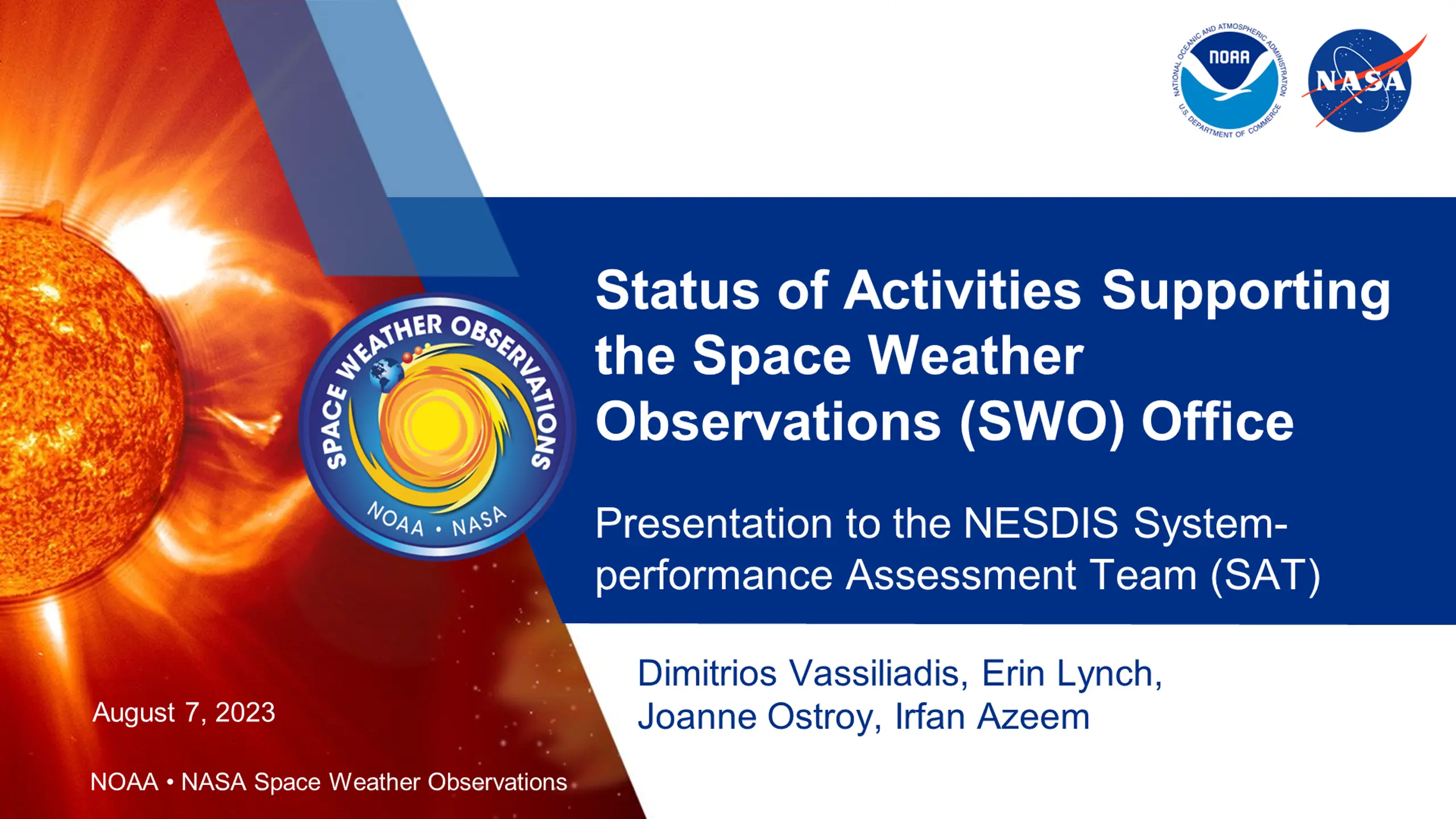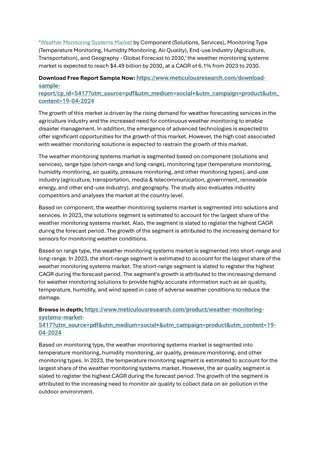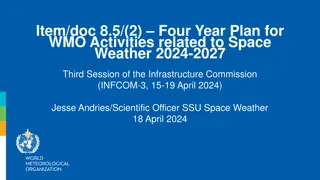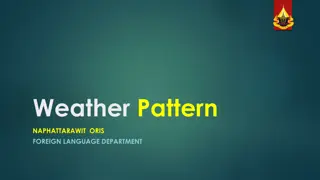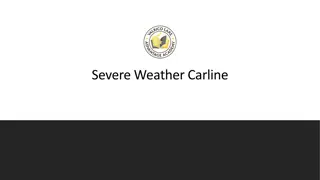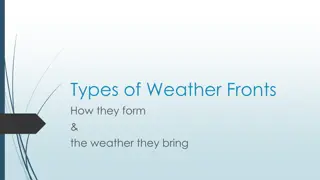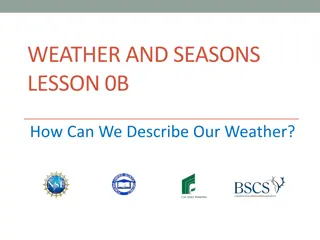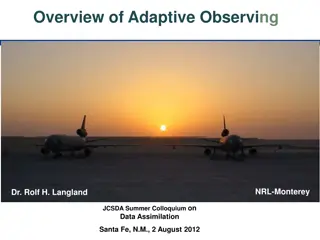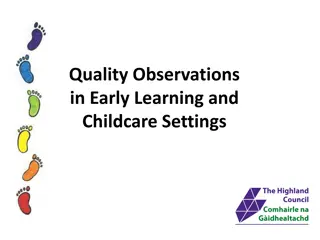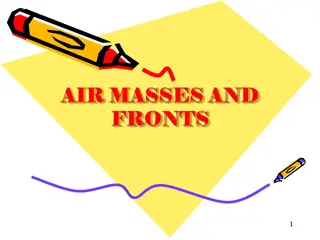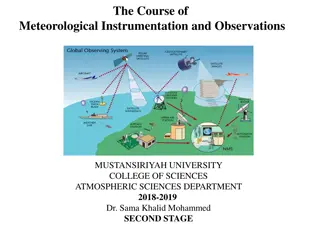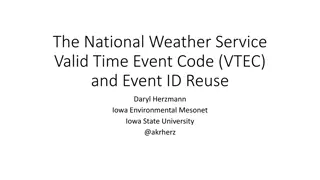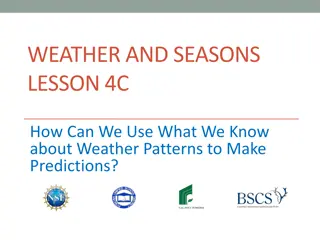Status of Activities Supporting the Space Weather Observations (SWO) Office
The status of activities supporting the Space Weather Observations (SWO) office, including implementation aspects and programs. It also emphasizes the importance of space weather information in various industry sectors and the need for planning follow-on missions for continued observations.
Download Presentation

Please find below an Image/Link to download the presentation.
The content on the website is provided AS IS for your information and personal use only. It may not be sold, licensed, or shared on other websites without obtaining consent from the author.If you encounter any issues during the download, it is possible that the publisher has removed the file from their server.
You are allowed to download the files provided on this website for personal or commercial use, subject to the condition that they are used lawfully. All files are the property of their respective owners.
The content on the website is provided AS IS for your information and personal use only. It may not be sold, licensed, or shared on other websites without obtaining consent from the author.
E N D
Presentation Transcript
Status of Activities Supporting the Space Weather Observations (SWO) Office Presentation to the NESDIS System- performance Assessment Team (SAT) Dimitrios Vassiliadis, Erin Lynch, Joanne Ostroy, Irfan Azeem August 7, 2023 NOAA NASA Space Weather Observations
Outline Introduction to space weather SWO programs and users Implementation aspects 2 NOAA NASA Space Weather Observations Presentation to SAT, August 2023
Introduction to Space Weather Space weather (SpWx) comprises all effects in the space environment that can pose a threat to humans or to technologies in space or on the ground. Awareness of the conditions in Earth s space environment is important for a wide range of users. The lack of space weather specification and forecasts reduces efficiency and increases cost and risk in several industry sectors relying on satellite and other services. As part of its Weather Ready Nation initiative, NOAA has the responsibility of providing such space weather information to its users. Since several monitoring satellites have a limited remaining lifespan (SOHO, ACE, DSCOVR) it is important to plan for follow-on missions for solar, heliospheric, and other observations. 3 NOAA NASA Space Weather Observations Presentation to SAT, August 2023
Space Weather Environments The main areas of space weather are very different from one another. They include: The Sun The heliosphere, or solar wind The Earth s magnetosphere The ionosphere The thermosphere. Together with the near-Earth solar wind, the three terrestrial environments are collectively called the geospace. The various types of space weather in these environments are classified in one Mission Service Area. Solar Wind Sun Magnetosphere Ionosphere + thermosphere 4 NOAA NASA Space Weather Observations Presentation to SAT, August 2023
Observations and Orbits NOAA s programs implements several types of SpWx observations: Imaging and sounding (including radio occultation, RO) Irradiance measurements For long-term observations, certain types of orbits have significant advantages: Geostationary (geosynchronous equatorial) orbit (GEO) Low Earth orbit (LEO) Highly elliptical orbit (HEO) including Tundra, Molniya, GTO, and others depending on the application Orbits around the Sun-Earth Lagrange points such as the Lagrange 1 (L1) and 5 (L5) points Remote-sensing of the Sun and Earth In situ measurements of particles and fields Types of orbits (not to scale) 5 NOAA NASA Space Weather Observations Presentation to SAT, August 2023
The Space Weather Observations Office (SWO) The Office of Projects, Planning and Analysis (OPPA) was renamed the Space Weather Observations (SWO) Office in 2023. It is the third pillar in NOAA observations together with the GEO and LEO offices, which direct the GOES-R and JPSS Programs. The prioritization of SpWx was due to several developments including the Promoting Research and Observations of Space Weather to Improve the Forecasting of Tomorrow (PROSWIFT) Act of 2020 which provided the legal framework for mandated changes at NOAA, NASA, DOD, NSF, and other agencies. Activities leading to these changes were undertaken by the SpWx community (government, academia, and industry). Some of them such as the National Space Weather Strategy and Action Plans (NSW-SAP) were organized in early versions by the OFCM and later by the National Science and Technology Council (NSTC, 2015, 2019). The PROSWIFT Act followed on the more widely ranging Weather Research and Innovation Forecasting Act of 2017 which however had limited specifications for SpWx activities. 6 NOAA NASA Space Weather Observations Presentation to SAT, August 2023
Space Weather Information Users SWO develops satellite programs to address the need for timely and accurate space weather information for its users. Users are divided into operational (with a need for low-latency data) and retrospective (high-latency). SWO s main customer is SWPC, specifically its Forecast Office, which provides watches, warnings, and alerts to operational end users. Other customers are the end users who span various industry and government sectors. Civilian sectors include electric power transmission and distribution, satellite operators, aviation, GNSS and other navigation services, human spaceflight programs, emergency management organizations, etc. Retrospective users include research and development (R&D) centers, academia and other educational organizations, third-party developers, and others. User issues, concerns, and recommendations are obtained through SWPC and NCEI, or directly through SWO s user engagement process. SWFO Product Distribution. APS is SWPC s backup service. 7 NOAA NASA Space Weather Observations Presentation to SAT, August 2023
SWO and Other NOAA Organizations NESDIS is presently providing observations to NWS and the public through its satellite systems such as GOES-R (first launch in 2016), DSCOVR (2015), and COSMIC-2 (2019). The Program of Record (POR) 2025 comprises all satellites and sensors that will be operational in 2025. NOAA also relies on data from partner organizations such as NASA, DOD, ESA, and others. After the POR-2025, SWO will be responsible for continuing present SpWx observations and develop new ones. NWS in turn is responsible for monitoring and forecasting SpWx conditions at the Sun and in the near-Earth environment. NWS also identifies operational user needs. numerical weather prediction (NWP) models that are typically run in real time and ingest environmental observations. The National Centers for Environmental Prediction (NCEP) Space Weather Prediction Center (SWPC) relies on Research and modeling are limited to a few areas of applications implemented at SWPC and NCEI. There is no representation of SpWx in NOAA s OAR, although this is expected to change in the future. Data archiving and stewardship functions are implemented at NCEI which is currently expanding its functions for SWO s Programs within the NOAA Common Cloud Framework (NCCF) in collaboration with OCS. 8 NOAA NASA Space Weather Observations Presentation to SAT, August 2023
SWO Programs To address user needs, SWO has been leading several recent and current programs. SWO currently has two satellite programs in its portfolio (schematics on right): 1. The Space Weather Follow On (SWFO) Program, a successor to DSCOVR as well as the operational functions of NASA s SOHO and ACE. Its main observatory is SWFO Lagrange 1 (SWFO-L1). 2. The Space Weather Next (SW Next) Program will continue and expand SWFO and other NOAA SpWx programs. It includes the Lagrange 1 (L1) Series Project, the successor to SWFO-L1, currently in formulation, and future GEO, LEO, and L5 observational projects. Earlier POR-2025 satellite systems, either directly under OPPA s responsibility or indirectly contributing to its observational goals, included COSMIC-2 (managed by Taiwan s NSPO), DSCOVR and POES (NOAA/OSPO), and the GEO solar remote sensing and in situ SpWx measurements (NOAA/GOES-R). SWO is planning to continue several of these functions through SW Next. 9 NOAA NASA Space Weather Observations Presentation to SAT, August 2023
SWO: Supporting Operations, Enabling Science (1/2) While the role of SWO programs is operational and aims to support the NWS needs, the significance of supporting science and applications has been increasing in SWO as in other NOAA satellite programs. It is increasingly important to a) extract the maximum amount of environmental information provided by satellite measurements for situational awareness; and b) tailor it to NWP model usage. Examples of using operational data for model development include model validation, driving, and data assimilation. SWO science-related NOAA-internal activities for optimizing mission development for users and models include: applications, and sensor technologies. Global TEC (GloTEC) operational model at SWPC Creating the positions of the SWO Senior Scientist (summer 2023) and other Program and Project scientists. Collaborating with SWPC, NCEI, and NASA, on science topics such as observational capabilities, model needs, user Reaching out to industry/academia for the latest capabilities of sensors and models. 10 NOAA NASA Space Weather Observations Presentation to SAT, August 2023
SWO: Supporting Operations, Enabling Science (2/2) Further, SWO s community-wide activities for enabling science and applications include: SpWx Operations and Research Infrastructure (2020, 2021). With NASA and NSF, co-funding the Heliophysics community s Decadal Survey (2024-2033). Research (R2O) framework developed by NOAA (SWPC), NASA, and NSF in order to boost the capabilities of research models. ionospheric, thermospheric, and inner-magnetospheric applications. Funding four Observing System Simulation Experiments (OSSEs) in 2022 and organizing a special session in the AGU Fall Meeting 2022. Advocating for a SpWx research component at OAR. Funding the National Academies to organize three workshops on Promoting the Research to Operations (R2O) and Operations to Encouraging Data Assimilation of NOAA SpWx data in SWO-funded UCLA OSSE on radiation belt flux measurement optimization: method schematic (Kellerman, 2022) 11 NOAA NASA Space Weather Observations Presentation to SAT, August 2023
SWO: a NOAA-NASA Program Office SWO is a joint NOAA-NASA Program Office whose two-agency structure has precedents in the GOES-R and JPSS Programs. NASA/SMD s Rideshare program: SWFO-L1 and IMAP Both SWFO and SW Next are overseen by the Joint Agency Satellite Division (JASD). A focal point of the NOAA-NASA collaboration is the technical management including the mission development. In addition, NASA provides valuable expertise during the acquisition process Depending on the Program or Project, NASA directly participates in or provides feedback on the requirement formulation. NASA provides additional technical support for science, mission design (including spacecraft specification, orbit design, etc.), systems engineering, review management, and selected engineering services. NOAA operational use of NASA s SOHO/LASCO imagery Depending on the Program or Project, NASA also provides launch service support such as the rideshare option for SWFO-L1, which will be launched with NASA s IMAP in 2025. NASA also provides gap mitigation options such as, historically, ACE, SOHO, and STEREO observations; and in the future, PUNCH and IMAP datastreams. 12 NOAA NASA Space Weather Observations Presentation to SAT, August 2023
SWFO Status SWFO has passed DOC Milestone 2 and is in NASA s Project Phase D. It passed the Mission Operations Readiness (MOR) review in June 2023 and is preparing for the System Integration Review (SIR) in October 2023. Requirements for coronal and heliospheric observations were formulated with direct feedback from SWPC. Several are designated as Key Performance Parameters (KPP) used to define mission success. SWFO has two flight components: a coronagraph at GEO on board GOES-U; and an observatory with a second coronagraph and in situ instruments at L1. The first Compact Coronagraph (CCOR-1) has been integrated on GOES-U and is in the process of end-to-end and other tests such as the Data Operations Exercises later this year. Launch is planned for April 2024. Schematic of SWFO-L1 (Ball Aerospace) SWFO-L1 is planned for launch in February 2025 in a rideshare with NASA s IMAP. The instruments on SWFO-L1 are going through their Pre-Environmental Reviews (PER) this summer. The Ground Segment is building new antennas at Wallops and Fairmont, WV; and builds or leases antennas in OCONUS locations such as Australia and S. Europe. It leverages the NOAA Ground Enterprise, specifically several key GOES-R Ground Segment Project functions. It continues DSCOVR s Real Time Solar Wind network (RTSWnet) via agreements with Germany, Japan, and Korea (others pending). Product Generation and Distribution is implemented at SWPC and NCEI with archive and access at NCCF. New antenna being assembled at CBU 13 NOAA NASA Space Weather Observations Presentation to SAT, August 2023
SWFO-L1: Concept of Operations 14 Presentation to SAT, August 2023 NOAA NASA Space Weather Observations
SWFO Program: Heliophysics Instruments Compact Coronagraphs (CCORs): Developed by the Naval Research Lab (NRL), the telescope will be used to observe the solar corona and detect coronal mass ejections (CMEs),CIRs and other structures. CCOR-1 will fly on the GOES-U satellite (2024) and a nearly identical CCOR-2 on SWFO-L1 (2025). Solar Wind Plasma Sensor (SWiPS): Built by Southwest Research Institute (SwRI), it will measure properties of the solar wind flowing past SWFO-L1, such as density, velocity, and temperature. Suprathermal Ion Sensor (STIS): Developed by University of California, Berkeley, it will collect fast ions in the solar wind. Magnetometer (MAG): Developed by the University of New Hampshire and SwRI, it will measure the interplanetary magnetic field. 15 Presentation to SAT, August 2023 NOAA NASA Space Weather Observations
SW Next Status SW Next is a comprehensive, loosely-coupled program to replace and expand capabilities before 2030. It passed its DOC Milestone 1 in October 2022, the System Design Review (SDR) in February 2023, and the Key Decision Point (KDP; program approval) 1 in May 2023. Requirement flowdown starts at the NESDIS Level Requirements (NLR). Program Objectives are aspirational statements based on user needs and are not limited by financial constraints. They serve as envelopes for the actual performance of the satellite-based observational system. Requirements are allocated from the Objectives for each Project within the SW Next Program and implemented within budgetary constraints. The Projects include the L1 Series planned to replace SWFO-L1, the GEO Series to replace current GOES-R SpWx capabilities, etc. The most important observational requirements are identified as High Availability Products (HAPs), which are based on NWS needs. SW Next performed an Analysis of Alternatives resulting in a reference architecture. The L1 Series is the most advanced of the Projects, having passed its Mission Concept Review in March 2023 and planning the KDP-A in September 2023. The L5 Project providing a coronagraph to fly on ESA s Vigil mission (2029) is well into development. The Ground Segment is being developed to leverage the NOAA Ground Enterprise, but with more visible roles for NCEI (taking responsibility for all the algorithm development, including for operational products in coordination with NWS) and OCS (being responsible for the implementation of the archive as well as the Product Generation through the NCCF). 16 NOAA NASA Space Weather Observations Presentation to SAT, August 2023
SW Next Program Requirement Hierarchy 17 Presentation to SAT, August 2023 NOAA NASA Space Weather Observations
SW Next Architecture Summary 18 Presentation to SAT, August 2023 NOAA NASA Space Weather Observations
Intra-NESDIS Collaborations SW Next notional diagram for its Ground Services Space Weather is a high-priority field, but requires resources beyond those of a single NESDIS Office. SWO has therefore developed a number of important collaborations within NOAA. GOES-R: provides infrastructure for implementing SWFO by hosting CCOR-1 and providing Ground Segment functions. In addition, it provides the legacy observations from GEO that SWO is planning to continue and expand. NCEI: the centers have a dual role for SpWx: archiving and stewardship for data products as well as specific instances of modeling and analysis. NCEI is currently developing the Cloud Algorithm Development And Test (CADAT) pilot project for SWO in collaboration with OCS to generate both operational and retrospective products in place of STAR. SAE: see next slide IIAD: coordination for building domestic, international partnerships OSPO: mission control of SWO flight segments. OCS: they provide a range of fundamental functions including data services such as PG and PD. OSC: Coordinating with it and SWPC on Space Traffic Management. CADAT pilot project timeline 19 NOAA NASA Space Weather Observations Presentation to SAT, August 2023
In Detail: SWO-SAE Collaboration SWO has many active collaborations with SAE, several of which are summarized here. Technology Planning and integration for Observations (TPIO): SAE is conducting a refresh of the Consolidated Observational User Requirement List (COURL). SWO has reviewed the COURL and TPIO s Earth Observation Requirement Evaluation System (EORES) and provided feedback on user needs and requirement parameters. Advanced Systems Performance Evaluation tool (ASPEN): SWO has reviewed SpWx parameters in ASPEN s databases for Application-dependent Requirement Ranges (ARR), Application-dependent Technical Priorities (ATP), and Sensor/Constellation Performance (SCP). SWO has provided use cases for applications and observing systems based on which the ASPEN team will build databases and calculate performance metrics for the SpWx systems. Five-year Product Plan and Baseline: SWO has regularly reviewed these documents and provided recommendations on solar and other SpWx current and planned products. NOAA Observing System Integrated Analysis-2 (NOSIA-2): SWO has provided feedback on the requirement organization and on TPIO estimates of value of products to user categories. Space Weather Data Pilot (part of the NESDIS Commercial Data Program): This project is of high interest for SWO because it has implications for the implementation of several LEO observations (see next slide). Joint Ventures: SWO has provided guidance for defining priorities or applied for funding for SpWx projects; SWO remains interested in the results of several JV projects. User Engagement Council: SWO s UE team has coordinated with the Council in crafting its user approach. Broad Agency Announcements: SWO has reviewed proposals, and supervised selected projects. For instance, some of the 2020 BAA projects were useful in early stages of SW Next mission planning. 20 NOAA NASA Space Weather Observations Presentation to SAT, August 2023
SAE: Space Weather Data Pilot With thanks to Martin McHugh, Marc Gasbarro, and Patricia Weir Longitude-latitude map of coverage: PlanetIQ, Spire Project: SAE has developed a SpWx Data Pilot as part of the Commercial Data Program. SWO staff are participating in the pilot as part of interagency coordination and to provide subject matter expertise. Purpose: derive ionospheric products (TEC and scintillation indices S4and ) that meet current and future operational SpWx model and app needs. Data may contribute to SWPC products for ICAO (aviation). Vendors: PlanetIQ (2 6U) and Spire (~25 3U) with POD and RO antennas providing high-rate, high-coverage GNSS data. Initial findings: EDP and TEC demonstrated good accuracy; good validation with COSMIC-2 and ground-station data; comprehensive analysis on scintillation with RO data. For daily median latency objective (30 minutes), Spire performance better than PlanetIQ s, which can however be improved with more ground stations and satellites. Lessons learned: Scintillation algorithm insufficient to capture all storm events, esp. for high latitudes; geolocation method to be improved; coverage and refresh rates to be evaluated differently; RFI metrics to be improved. Summary: Validation has been successful and the pilot has been highly informative so far for refining SOW requirements for a future data purchase. The SWPC model infrastructure is ready to use RO data and products. EDP from sample orbit (yields TEC) Scintillation event identified via S4index 21 NOAA NASA Space Weather Observations Presentation to SAT, August 2023
Interagency Partnerships SpWx needs and user categories are diverse and resources are limited. Therefore, for several decades, NOAA (NWS) has partnered with other agencies (NASA, DOD, NSF, etc.) to develop interagency projects such as the National Space Weather Strategy and Action Plans (NSW-SAP), the Space Weather Benchmarks, and others, leading up to the PROSWIFT Act and other milestones. Following up from NSW- SAP and PROSWIFT, several interagency groups have formed. Space Weather Operations, Research and Mitigation: The SWORM subcommittee is a Federal coordinating body organized under the National Science and Technology Council (NSTC) Committee on Homeland and National Security, organized under the Office of Science and Technology Policy (OSTP). The SWORM coordinates Federal Government department and agency activities to meet the goals and objectives specified in the NSW-SAP (https://www.sworm.gov/). Space Weather Advisory Group: Per PROSWIFT guidance, the NOAA Administrator has established the SWAG with representation from government, industry, science, and users with the goal of advising the SpWx interagency working group on the following: Advances in the SpWx enterprise capabilities; improvements that can be undertaken in preparing for, mitigating, responding to, and recovering from SpWx phenomena; coordination of the R2O and O2R processes; developments and implementation steps of the SpWx strategy including updates and reevaluations (https://www.weather.gov/swag). Space Weather Enterprise Forum: Since 2007, SWEF has brought together stakeholders from industry, academia, government, and Capitol Hill in an annual one-day forum to raise awareness of emerging space weather hazards and their impacts on society. SWEF s ultimate goal is to advance the broader use of SpWx information on a routine basis while improving the Nation s ability to prepare for, avoid, mitigate, respond to, and recover from potentially devastating impacts of SpWx events. The annual organization of SWEF rotates among agencies. On June 22, 2023, a SWO team lead the organization of a highly successful event (600+) in the Russell Senate Office Building (https://www.nesdis.noaa.gov/events/2023-space-weather-enterprise-forum-swef) 22 NOAA NASA Space Weather Observations Presentation to SAT, August 2023
International Partnerships SWO has been actively collaborating with international agencies and parent organizations such as the World Meteorological Organization. Below are selected projects. Hosting and instrument exchanges: With the European Space Agency (ESA): the L1 Series is planned to host ESA s XFM sensor in 2028; ESA s Vigil mission to L5 is planned to host the CCOR-3 instrument in 2029. With the Canadian Space Agency (CSA): ongoing discussions on a possible hosting of a NOAA instrument on a CSA mission in the 2030 timeframe. With EUMETSAT: the agency has hosted NOAA s Space Environment Monitoring (SEM) package on the MetOp satellite system. Development of sensors with similar capabilities and plans for intercalibration: With Japan Meteorological Agency (JMA) and Korea Meteorological Agency (KMA) towards the development of a GEO-ring of energetic-particle measurements. Other projects: Radio Occultation (RO) monitoring, development of a satellite anomaly database with government and commercial contributions, various data exchanges. 23 NOAA NASA Space Weather Observations Presentation to SAT, August 2023
User Engagement Process SWO conducts user engagement to identify, adjust, and quantify user needs. It does so in line with the broader NESDIS user engagement strategy and coordinating with SAE s User Engagement Council. Selected events include: Focused SpWx workshops (participants: sector users): Spring 2022: Simulating Space Weather Extremes Workshop by NSF, Orion (45) Fall 2022: NERC s Geomagnetic Disturbance Planning workshop (100+), SEESAW- III satellite operator workshop (~100), SWPC civil aviation testbed experiment (100+) Major annual SpWx workshops (operators, industry, some scientists) ESWW (300+); SWW (500+; April 2023: SWO-organized session on User Readiness, 100) Annual Conferences (primarily scientists): AGU (2,500+); AMS (500+); GEM (200+) Community (policymakers, government leaders, legislators, researchers, agencies, private-sector, users) SWEF (SWO: lead organizer in June 2023; 600+) NESDIS UE Council Guidance 24 NOAA NASA Space Weather Observations Presentation to SAT, August 2023
Future Developments The following are important and, in some cases, disruptive developments as SWO evolves: Observations: Continue formulation and development of the L1 Series and L5 Projects; initiate the GEO and LEO projects including strengthening partnerships. Expand collaborations within NOAA and NASA. Technology infusion: identify and integrate cutting-edge satellite and sensor technologies in collaborations with NASA, DOD, industry, and academia. Research and models: R2O: Bolster stakeholder awareness and broaden support for the framework developed by NOAA (SWPC), NASA, and NSF Algorithm development: Work with NCEI and OCS to encourage the use of modern AI/ML methods and cloud-computing technologies along with traditional tools. New participants: Promote SpWx modeling and research within NOAA (e.g., OAR and STAR). Archive and Access: leverage modern capabilities of cloud-based archive and access of SpWx data in collaboration with OCS. 25 NOAA NASA Space Weather Observations Presentation to SAT, August 2023
Summary SWO observational programs are designed to deliver to NWS critical imaging and in situ data of the space environment from several different platforms. SWFO is preparing its observatory and instrumentation payload for integration and testing prior to launches in 2024 and 2025. SW Next developed its Program Objectives, an Analysis of Alternatives and a reference architecture as it completed its SDR in February 2023. Its L1 Series project is planned to go through KDP-A in September 2023. SWO is working closely with other NESDIS offices, SWPC, and NASA organizations to define its next steps. It is also developing partnerships with domestic agencies for observations (NASA, DOD, and others) and with international agencies for instrument hosting and data exchanges (ESA, CSA, JMA, KMA, and others). As SWO evolves, it aims to continually update its user needs and priorities through regular coordination with SWPC and with NESDIS offices, and through its User Engagement program. 26 NOAA NASA Space Weather Observations Presentation to SAT, August 2023
